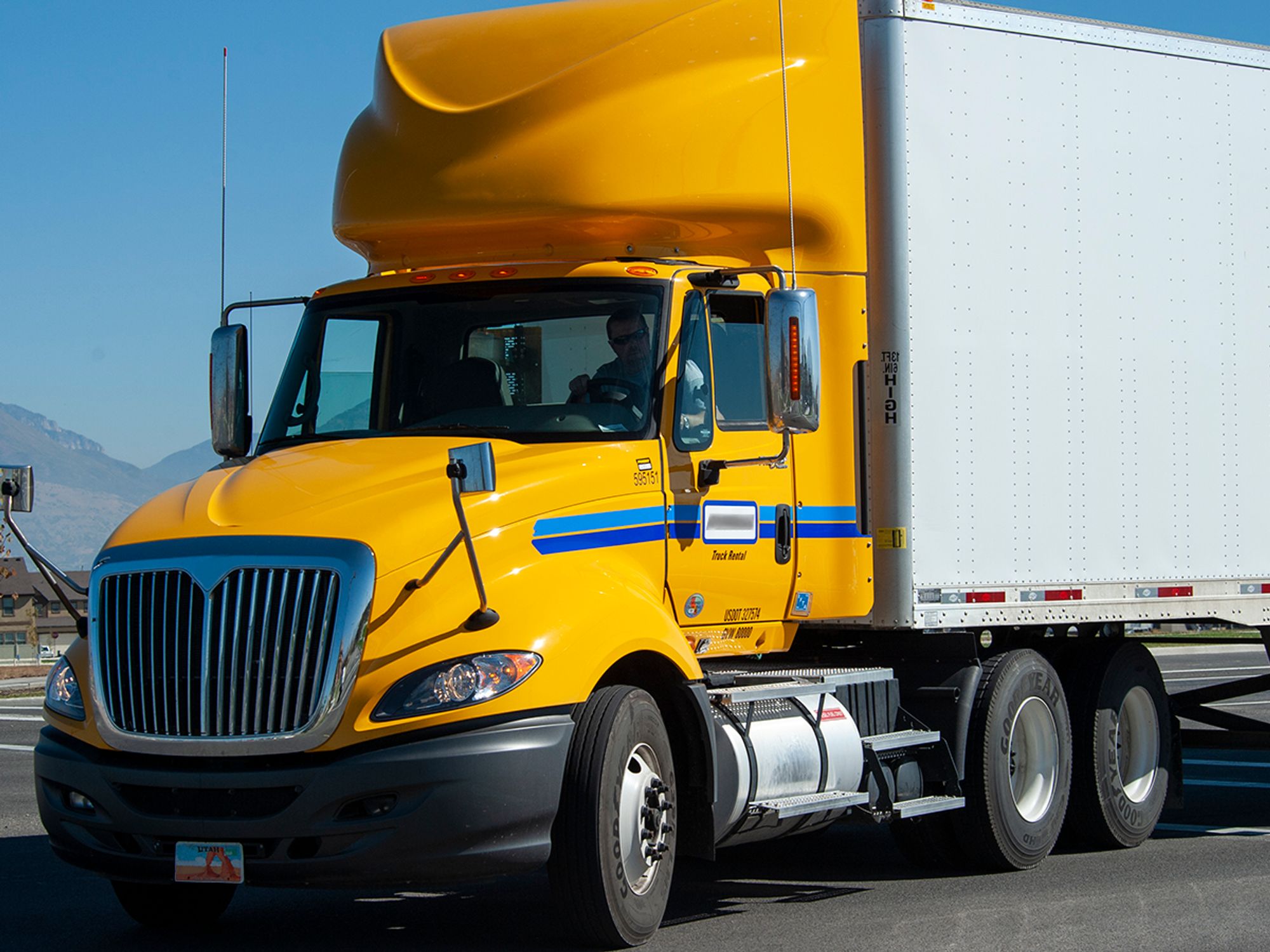How should rental vehicles, leased driver’s vehicles, and intermodal equipment be marked?

- Rental vehicles rented for 30 days or less may be conditionally marked with the rental company’s name and U.S. Department of Transportation number.
- An owner operator that is leased to a carrier must display the markings (name and U.S. Department of Transportation number) of the carrier – even if the operator has their own U.S. Department of Transportation number.
- Intermodal equipment must be marked with or otherwise identifiable via a U.S. Department of Transportation number.
Rental vehicles
All commercial motor vehicles (CMVs) operated by a carrier must be legally marked with the company name as listed on the MCS-150 and the carrier’s U.S. Department of Transportation (USDOT) number. This must be done before the vehicle is put into service and operated on public roads.
A vehicle is rented for a short period of time – 30 days or less may be marked with the rental company’s name and USDOT number. To qualify for the exception:
- The vehicle is rented for 30 days or less;
- The vehicle is properly marked with the rental company’s legal name and USDOT number;
- The rental agreement entered into by the lessor and the renting motor carrier (MC) conspicuously contains the following information:
- The name and complete physical address of the principal place of business of the renting MC, and
- The identification number issued the renting MC by the Federal Motor Carrier Safety Administration (FMCSA), preceded by the letters “USDOT,” and
- The sentence: “This lessor cooperates with all Federal, State, and local law enforcement officials nationwide to provide the identity of customers who operate this rental CMV;” and
- The rental agreement entered into by the lessor and the renting MC is carried on the rental CMV during the full term of the rental agreement.
Leased driver’s vehicles
The U.S. Department of Transportation (USDOT) number is used by the Federal Motor Carrier Safety Administration (FMCSA) and the States to identify motor carriers and monitor their safety performance. Owner-operators leased to a carrier operate under the carrier’s authority and USDOT number. There is no need for the owner-operator to have a separate USDOT number unless the owner operator will also operate as a carrier under their own authority.
An owner operator that is leased to a carrier must display the markings (name and USDOT number) of the carrier – even if the operator has their own USDOT number.
Intermodal equipment
Intermodal equipment must be marked with or otherwise identifiable via a U.S. Department of Transportation (USDOT) number. Under 390.21(g)(4), intermodal equipment providers have five options for identifying their intermodal equipment. In all cases, the identification must include the provider’s legal name or single trade name and the Federal Motor Carrier Safety Administration (FMCSA) identification number preceded by “USDOT.” Any one of the following five options will satisfy the identification requirement:
- Marking the identification on the curb side of the item of equipment. The marking must be in letters that contrast sharply in color with the background on which the letters are placed. The identification code must be readily legible, during daylight hours, from a distance of 50 feet while the vehicle is stationary. It must be kept and maintained in a manner that retains this legibility.
- Placing the identification marking on a label placed upon the curb side of the item of equipment. The label must be readily visible and legible to an inspection official during daylight hours when the vehicle is stationary. The label must be a color that contrasts sharply with the background on which it is placed, and the letters must also contrast sharply in color with the background of the label. The label must be kept and maintained in a manner that retains this legibility.
- Marking the interchange agreement. The USDOT number of the intermodal equipment provider, as well as the vehicle identification number (VIN) and 4-character Standard Carrier Alpha Code (SCAC) code and 6-digit unique identifying number, must be placed on the interchange agreement so that it is clearly identifiable to an inspection official.
- Placing the identification information on a document placed in a weather-tight compartment affixed to the frame of the intermodal equipment. The color of the letters used in the document must contrast sharply in color with the background of the document. The document must include additional information to identify the specific item of equipment (such as the VIN and 4-character SCAC code and 6-digit unique identifying number).
- Maintaining the USDOT number in a database. The database must be available via real-time internet and telephone access and must identify the name and USDOT number of the intermodal equipment provider responsible for the intermodal equipment. Database inquiry methods must include (a) SCAC plus trailing digits, (b) license plate number and state of license, or (c) VIN of the item of intermodal equipment. The database must offer read-only access without requiring advance user registration, a password, or a usage fee.
